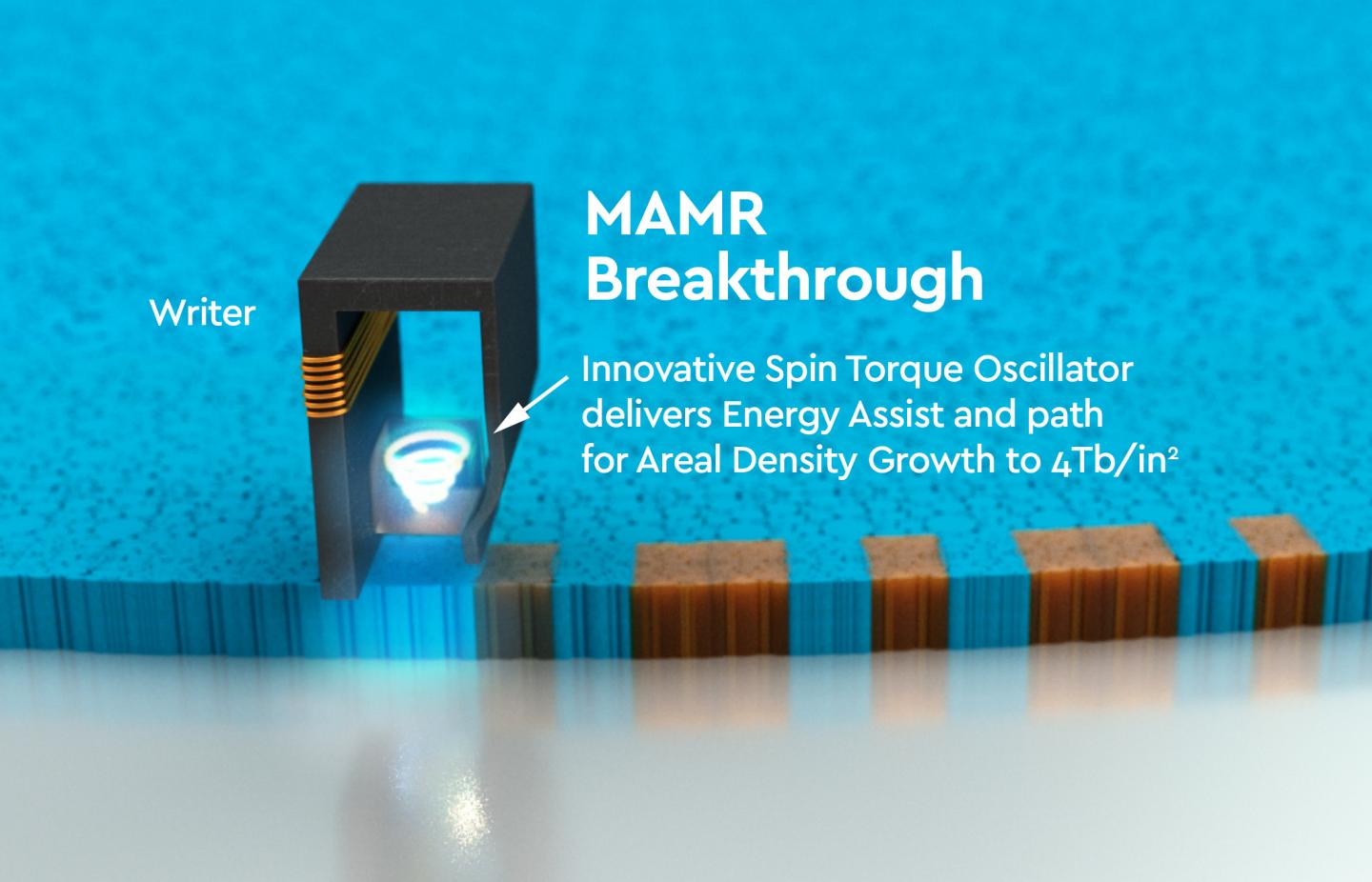WD announced a breakthrough innovation for delivering ultra-high capacity hard disk drives (HDDs) to meet the future demands of Big Data with proven data center-level reliability.
The event, held at the company’s headquarters in Silicon Valley, included a demonstration of the world’s first microwave-assisted magnetic recording (MAMR) HDD and presentations from company executives and the inventor of MAMR technology, Professor Jimmy Zhu from Carnegie Mellon University. The company also showcased advancements in micro actuation and Damascene recording head technology. Western Digital expects to begin shipping ultra-high capacity MAMR HDDs in 2019 for use in data centers that support Big Data applications across a full range of industries.
“As the volume, velocity, variety, value and longevity of both Big Data and Fast Data grow, a new generation of storage technologies are needed to not only support ever-expanding capacities, but ultimately help our customers analyze and garner insights into our increasingly connected universe of data,” said Mike Cordano, president and chief operating officer at Western Digital. “Our ground-breaking advancement in MAMR technology will enable Western Digital to address the future of high capacity storage by redefining the density potential of HDDs and introduce a new class of highly reliable, ‘ultra-high capacity’ drives. We have a proven track record for identifying, investing in and delivering advanced technologies that create new product categories and enable the world to realize the possibilities of data. Five years ago we introduced our HelioSeal®, helium-filled drive technology. Since then, we have shipped more than 20 million helium drives. That type of leadership and innovation continues today and we aim to leverage it well into the future.”
MAMR is one of two energy-assisted technologies that Western Digital has been developing for years. The company recently innovated a breakthrough in material and process that provides the required reliable and predictable performance, as well as the manufacturability to accelerate areal density and cost improvements to an estimated average of 15 percent per year. Developments in the other energy-assisted technology, specifically, heat-assisted magnetic recording (HAMR), present new material science and reliability challenges that are not a factor in MAMR. Only MAMR demonstrates the reliability and cost profile that meets the demands of data center operators.
At the heart of the company’s innovation breakthrough is the “spin torque oscillator” used to generate a microwave field that increases the ability to record data at ultra-high density without sacrificing reliability. Western Digital’s innovative MAMR technology is expected to offer over 4 terabits-per-square-inch over time. With sustained improvements in recording density, MAMR promises to enable hard drives with 40TB of capacity and beyond by 2025, and continued expansion beyond that timeframe.
“Western Digital’s demonstration of MAMR technology is a significant breakthrough for the hard disk drive industry,” said John Rydning, research vice president, Hard Disk Drives, IDC. “Commercialization of MAMR technology will pave the way to higher recording densities, and lower cost per terabyte hard disk drives for enterprise datacenters, video surveillance systems, and consumer NAS products.”
Western Digital’s MAMR technology is the latest innovation to significantly improve areal densities. It builds upon a number of other leading innovations from the company. In addition to HelioSeal helium-filled drive technology, MAMR also builds upon the company’s micro actuation and recording head manufacturing technologies. Western Digital’s advanced micro actuation technology for data center applications enables hard drives to accurately and reliably position magnetic heads for writing and reading at ultra-high densities. The company’s head manufacturing operations are the only internal supplier to utilize Damascene processing to manufacture heads with the precise tolerances and complex structures required for reliable and cost-effective recording at ultra-high densities. The Damascene process also provides the capability to embed the spin torque oscillator that enables the manufacturing of MAMR heads. The combination of these technologies deliver superior total cost of ownership (TCO) across all sizes of cloud and enterprise data centers.
The demonstration of Western Digital’s MAMR technology is the latest achievement in decades of HDD leadership from the company, including over 7,000 issued patents in HDD technology, on-going helium-enabled HDD technology advancements – as highlighted by the recent introduction of the world’s first host-managed shingled magnetic recording (SMR) technology enterprise-class 14TB hard drive – and a long history of world’s firsts in multi-disk design.



